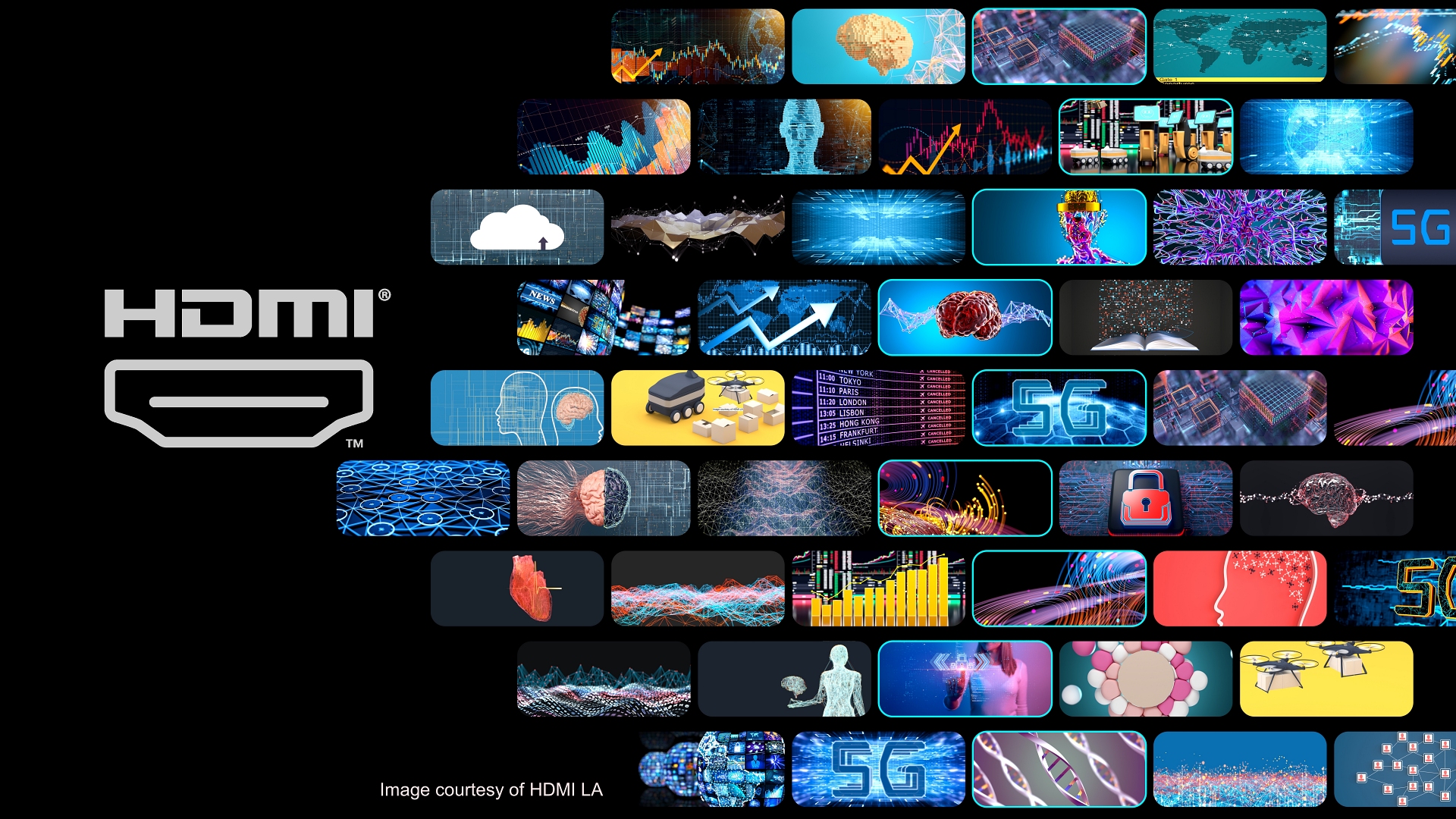HDMI 2.1 Is Ready To Tackle Today’s And Tomorrow’s TV Challenges

Sponsored Content from HDMI
HDMI technology plays an important role in end-to-end broadcast infrastructure, and with the introduction of the latest HDMI® 2.1 specification looks to continue as a valuable audio and video interface in broadcast applications as diverse as video editing and on-camera video displays.
In fact depending on their size, equipment selection and budget, stations regularly rely on HDMI interfaces when it comes to cameras, production switchers, computers and computer monitors, video wall controllers, multiviewer panels and Big Video—one of the most important elements of today’s news set design.
While broadcasters transport signals via a wide variety of cables and interfaces, ranging from SDI and HD-SDI to IP with fiber optics and Ethernet cable, HDMI technology plays an important role in this mix because it’s widely available, affordable, requires no added effort or engineering time to crimp BNC connectors to cables and consistently delivers top-notch performance as a result of a rigorous testing and certification program.
The HDMI 2.1 Spec
Higher resolution formats like 4K plus high dynamic range (HDR) and a broader color palette thanks to a wider color gamut (WCG) are slowly becoming realities for more and more broadcasters.
At the local level, some 70 TV stations around the country are expected to be on air by the end of the year offering viewers NextGen TV (ATSC 3.0) with support for 4K, HDR, WCG and some day in the future the possibility of 8K resolution.
When it comes to production, most broadcasters investing in new HD cameras recognize demand for 4K content is rising and are purchasing cameras and related production gear that can be upgraded to native 4K operation or easily integrated into 4K production workflows.
The HDMI 2.1 specification was created with higher data rates, greater picture resolution and enhanced imaging technologies like HDR and WCG in mind. The specification supports resolutions of 4K@120Hz, 8K@60Hz and up to 10K.
Connected with the Ultra High Speed HDMI® Cable, the HDMI 2.1 specification supports 48Gbps, which makes uncompressed 8K video with HDR available. Low electro-magnetic interference (EMI) reduces the risk of interference to wireless devices around the studio, and because the Ultra High Speed HDMI Cable is backwards compatible it can be used to support legacy HDMI devices and then reused when monitors and other hardware are upgraded.
Specing and Certification
There is a rigorous testing and compliance program to ensure cables and other equipment are compliant with HDMI specifications. Companies wishing to offer HDMI 2.1-enabled products to the market must submit them to an HDMI Forum Authorized Test Center that runs a suite of testing procedures defined in the HDMI Compliance Test Specification.
HDMI LA gives broadcasters and consumers alike who wish to purchase Ultra High Speed HDMI Cables several ways to ensure the cables they are buying are authentic. Every Ultra High Speed HDMI Cable must have that name of the package.
Further, an Ultra High Speed HDMI Cable Certification Label must appear on each package with the Ultra High Speed HDMI Cable Logo printed on the label and a QR code and holographic image that can only be scanned by the HDMI Cable Certification app. Finally, the words “Ultra High Speed HDMI Cable” must be printed on the cable itself.
These testing, labeling and certification procedures offer broadcasters and others peace of mind that the cables they are buying are legitimate and will perform at the highest level to meet their expectations.
For more information visit www.hdmi.org
The Adopted Trademarks HDMI, High-Definition Multimedia Interface, Ultra High Speed HDMI, and the HDMI Logo are trademarks or registered trademarks of HDMI Licensing Administrator, Inc.
Broadcasting & Cable Newsletter
The smarter way to stay on top of broadcasting and cable industry. Sign up below
